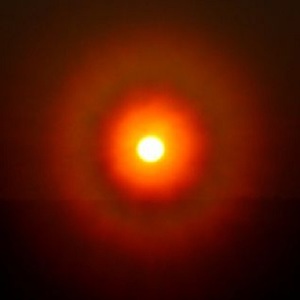

The spring season brings much in the way of excitement to the atmosphere. The sights of new life fill the landscape as flowers bloom and trees come out of their winter hibernation. Unfortunately, all the facets of spring aren't welcome for all. This season also brings the reintroduction of pollen into the atmosphere. These fine pollen grains are released into the air and then carried by the wind. Pollen can actually travel hundreds of miles by the wind. The most troublesome pollen for allergy sufferers are released by certain species of trees, weeds, and grasses. For those of us who suffer from seasonal allergies, our bodies mistake these fine grains for a virus or bacteria when they enter the body, triggering an immune response. This explains the runny noses, sneezes, and watery eyes that ensue. Aside from these unfortunate consequences that arrive during pollen season, there is a less troublesome outcome that results from pollen being released into the atmosphere.
During times when there is a high concentration of pollen in the atmosphere, an optical phenomenon, known as a pollen corona, can occur. A corona is a bright ring of light that will, at times, be seen surrounding the Moon or the Sun. The "normal" scenario for a corona is due to the diffraction of light that occurs when there is a thin veil of clouds full of suspended water droplets. When the light from the Sun or Moon reaches the water droplets, the light bends around these droplets on its way down to the surface. A way to picture this is observing how moving water will divert around a stone. Some of the water that deflects will team up with other wave crests to create a larger wave. The areas where the light from the Moon or Sun deflects and collides with other light waves is what creates the "halo" effect.
When pollen levels are high enough, the suspended granules result in the same diffraction of light that can create a corona around the Sun or Moon. At times, coronas may be seen with a few different colored rings that can go from a bluish to a reddish tint. This is more typical in a common corona rather than a pollen-induced corona.
